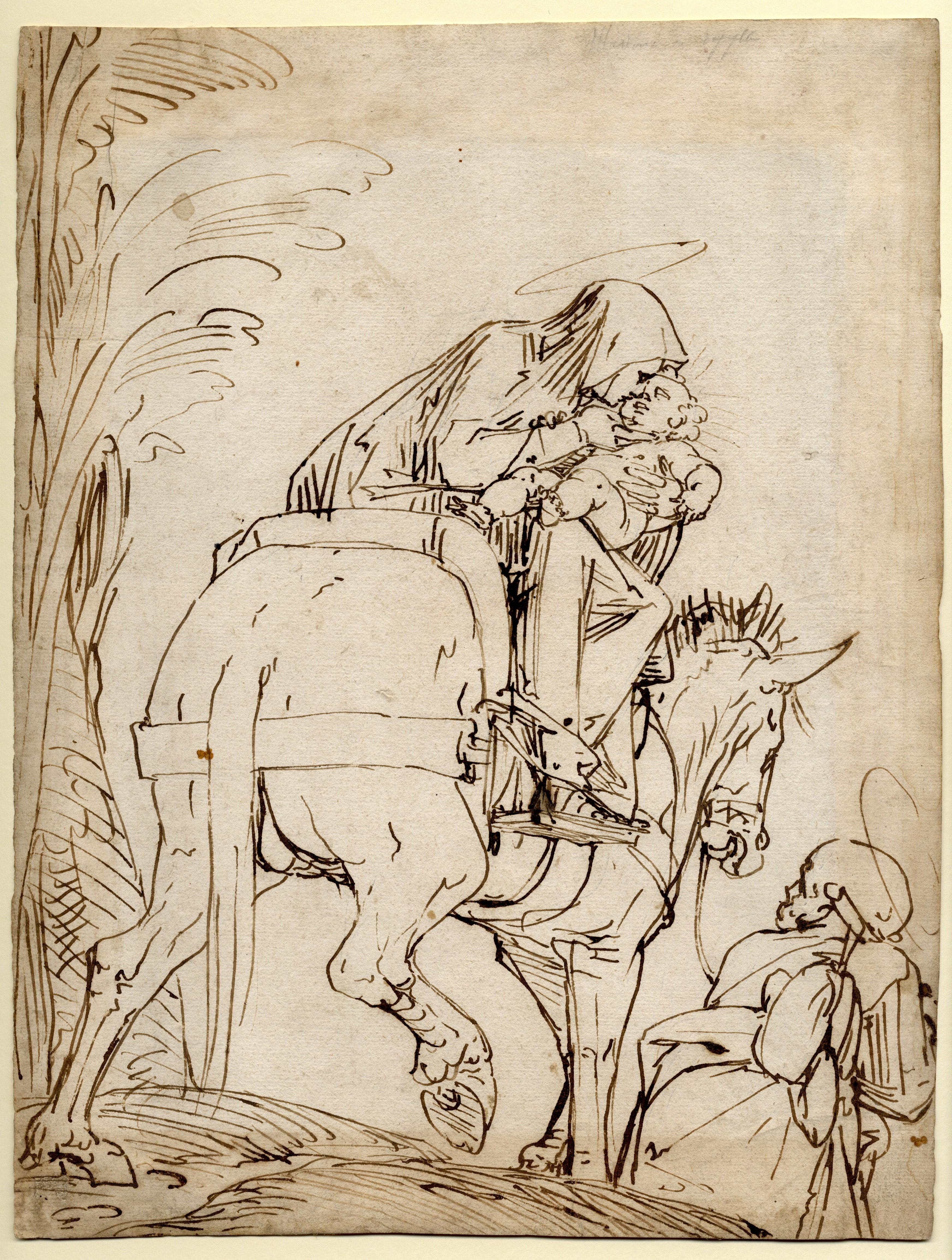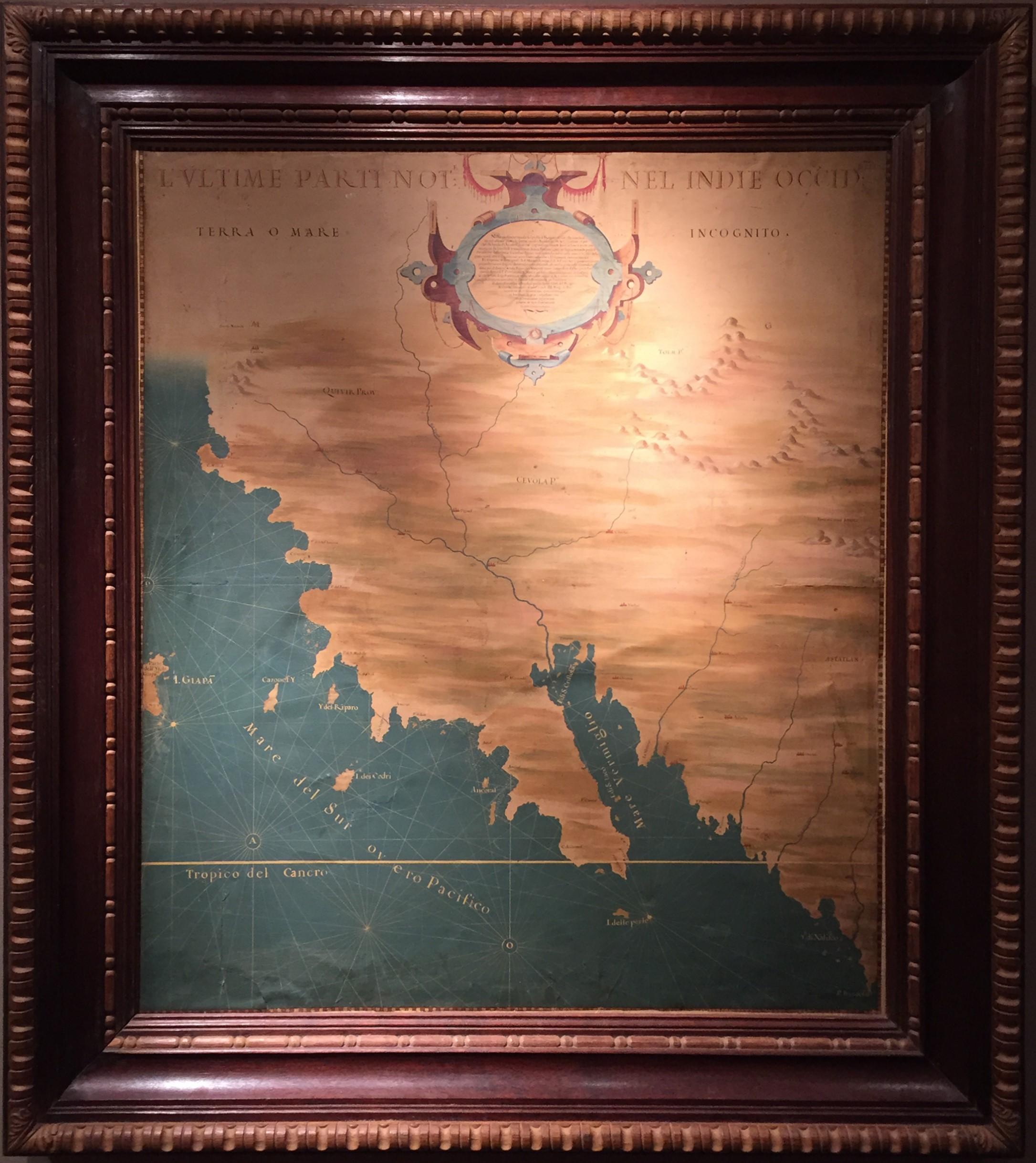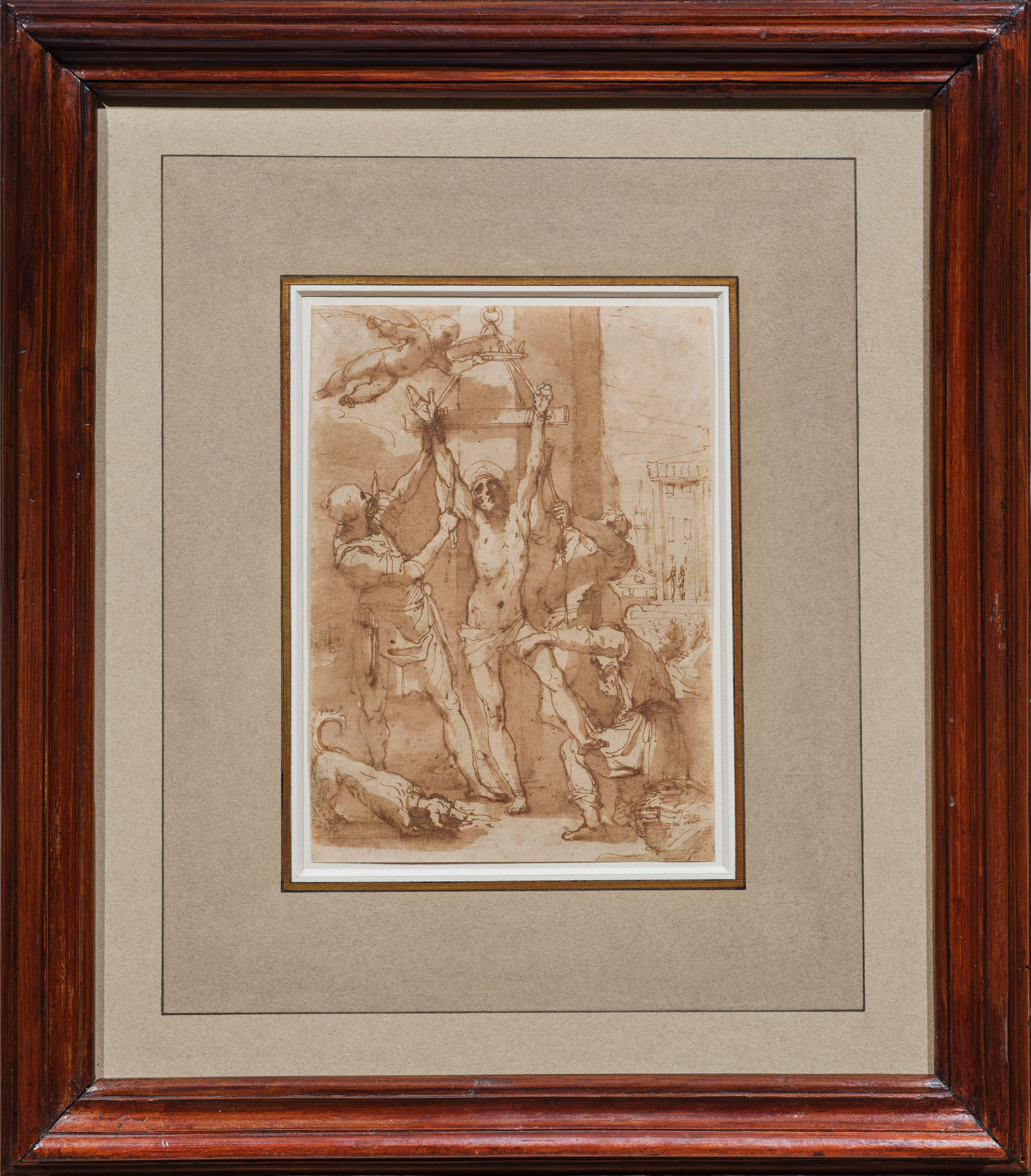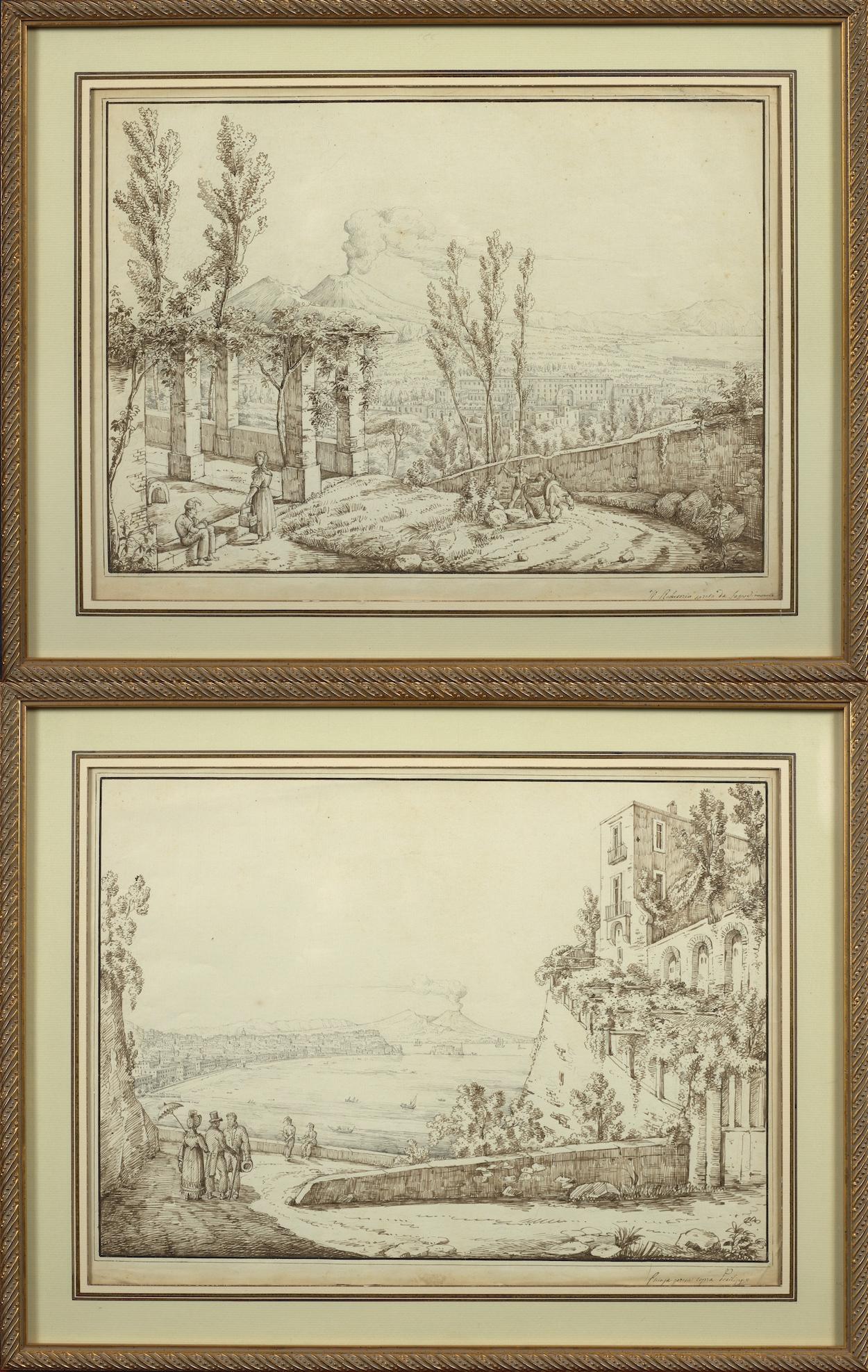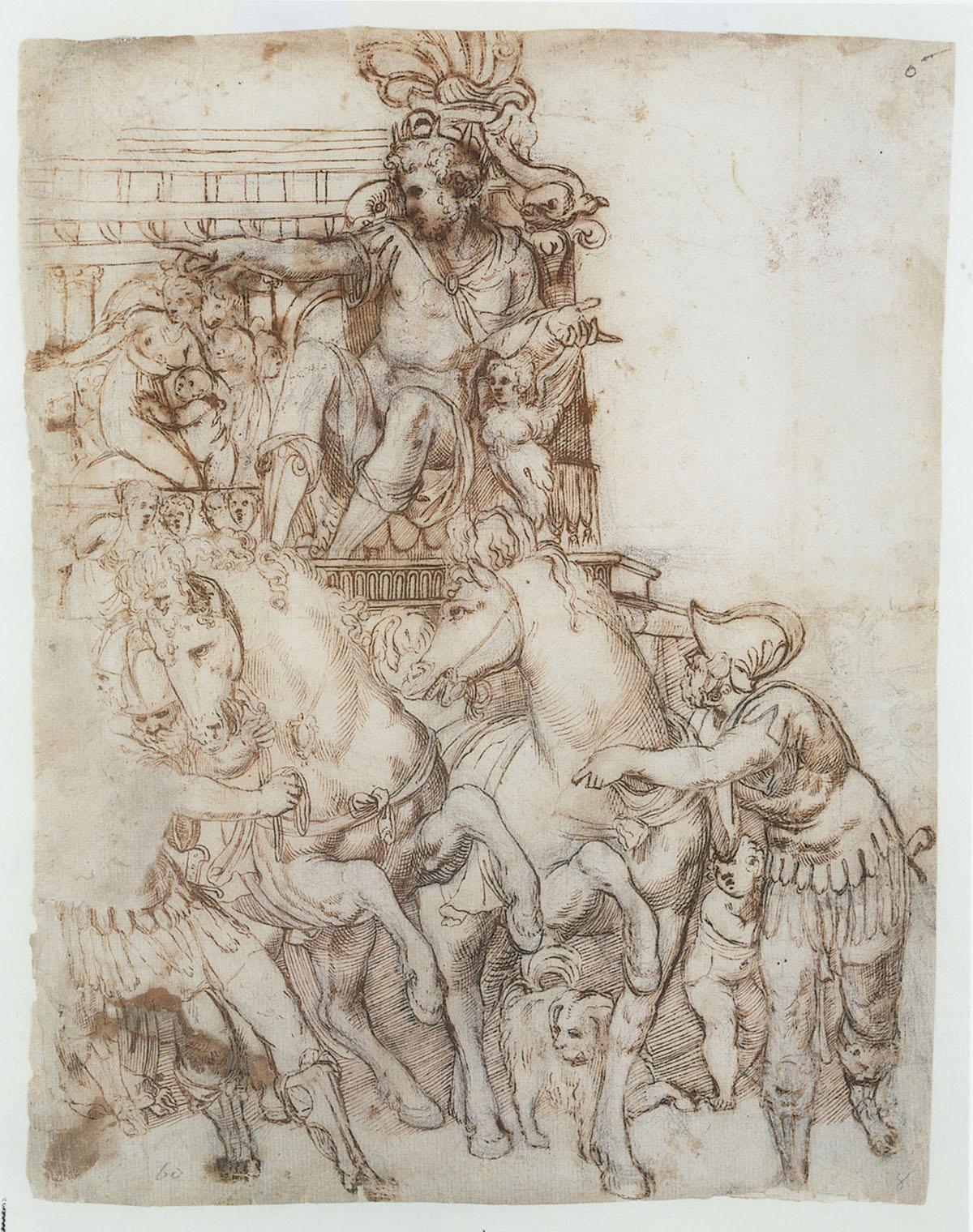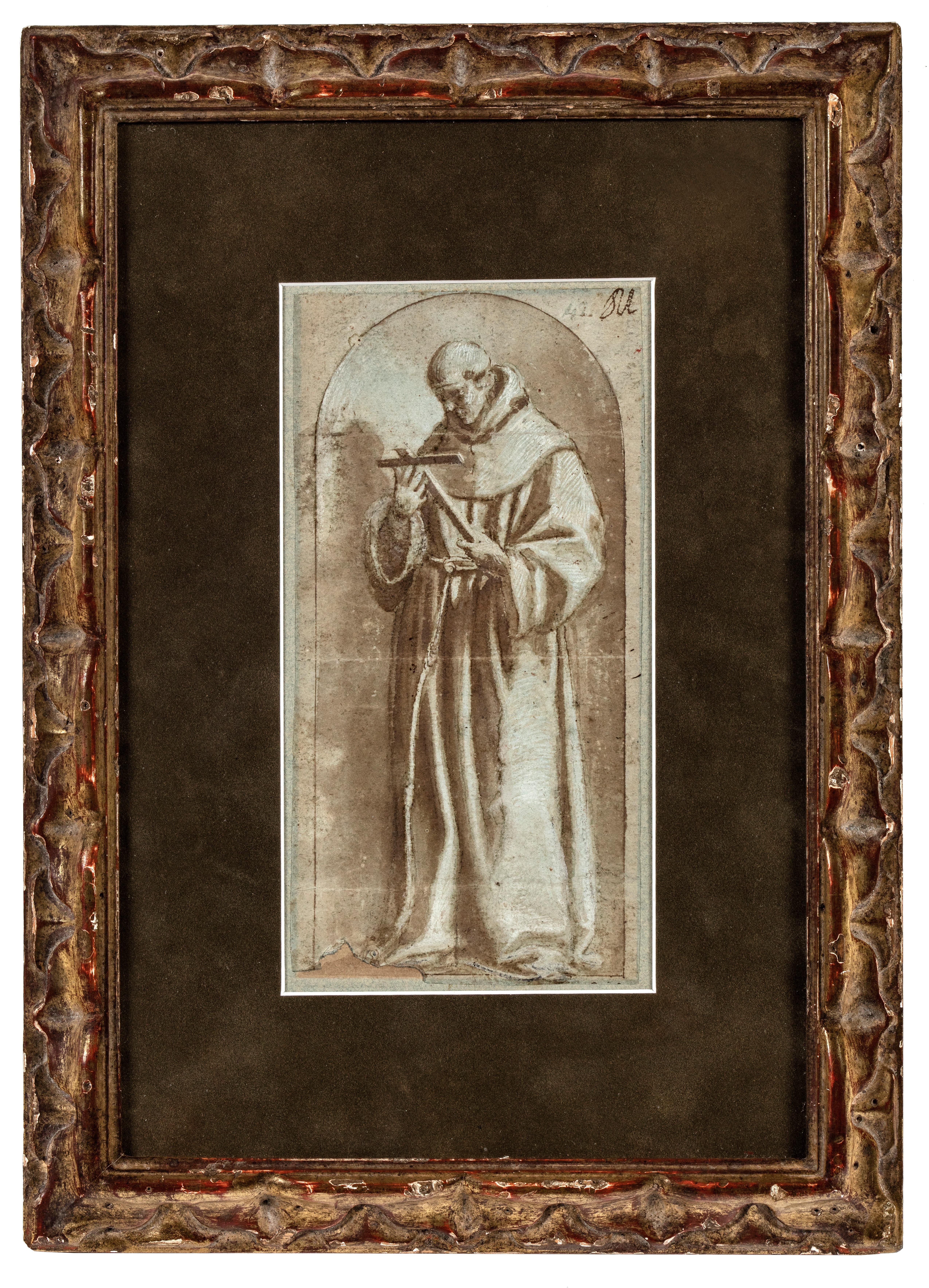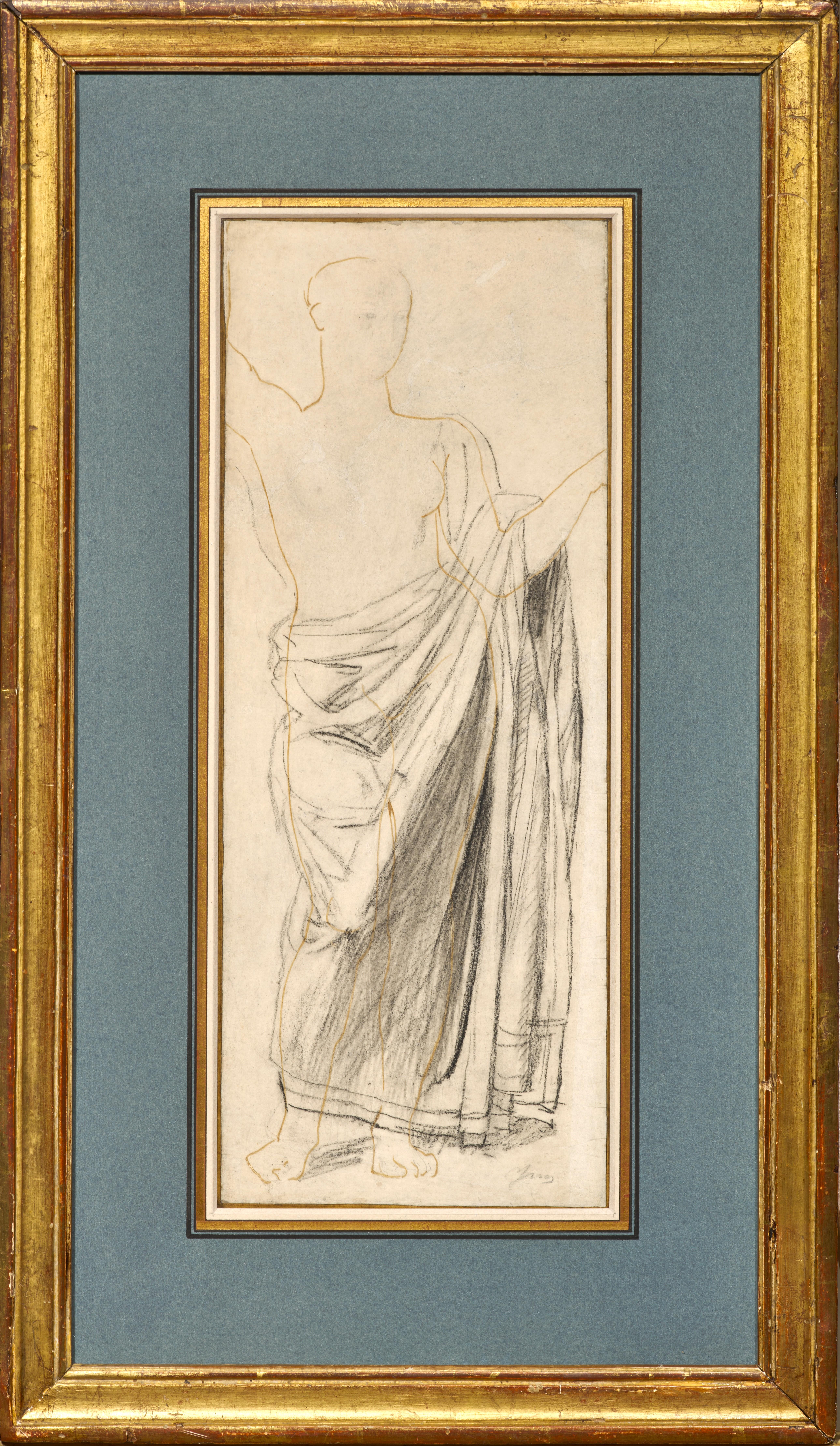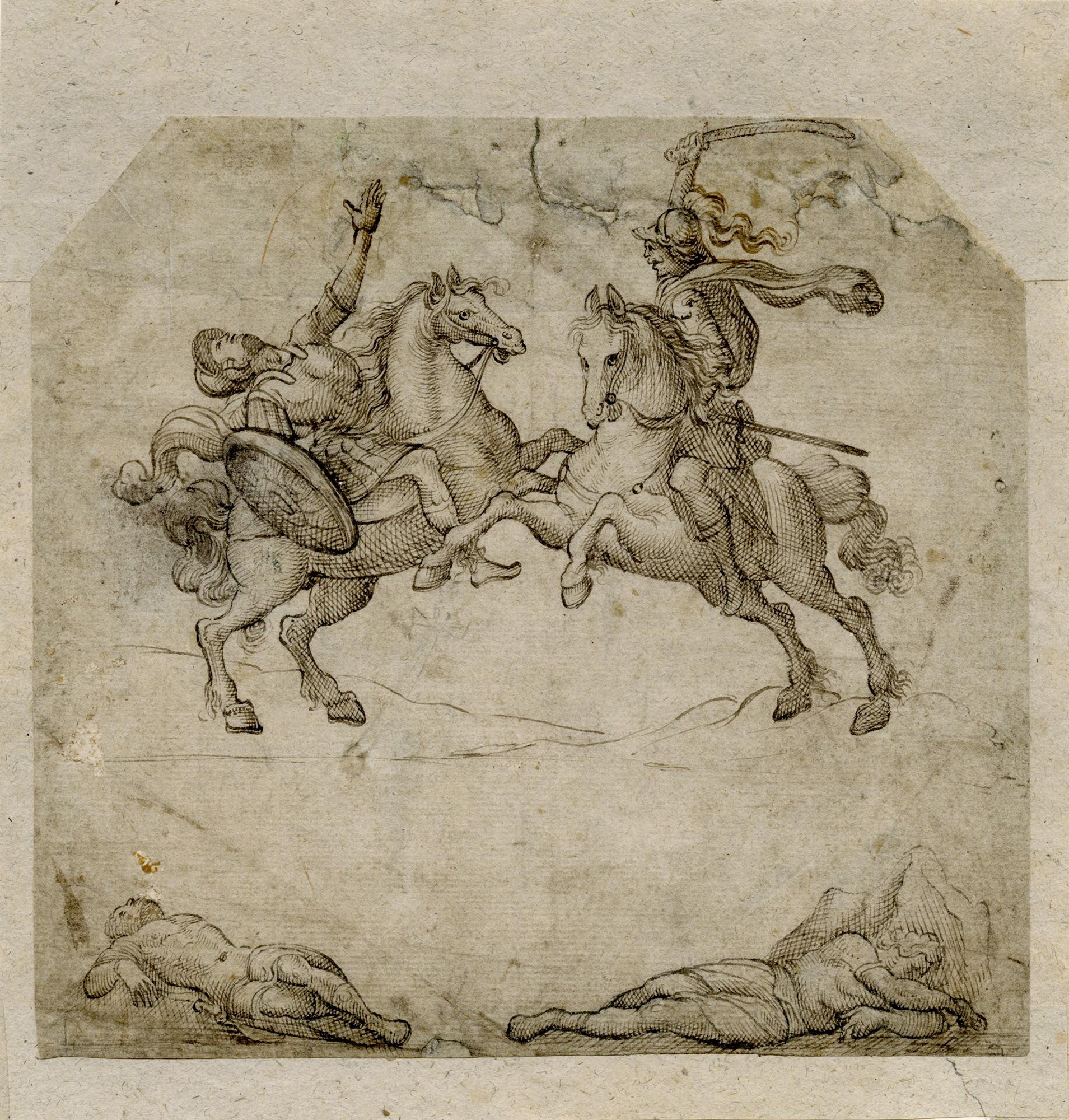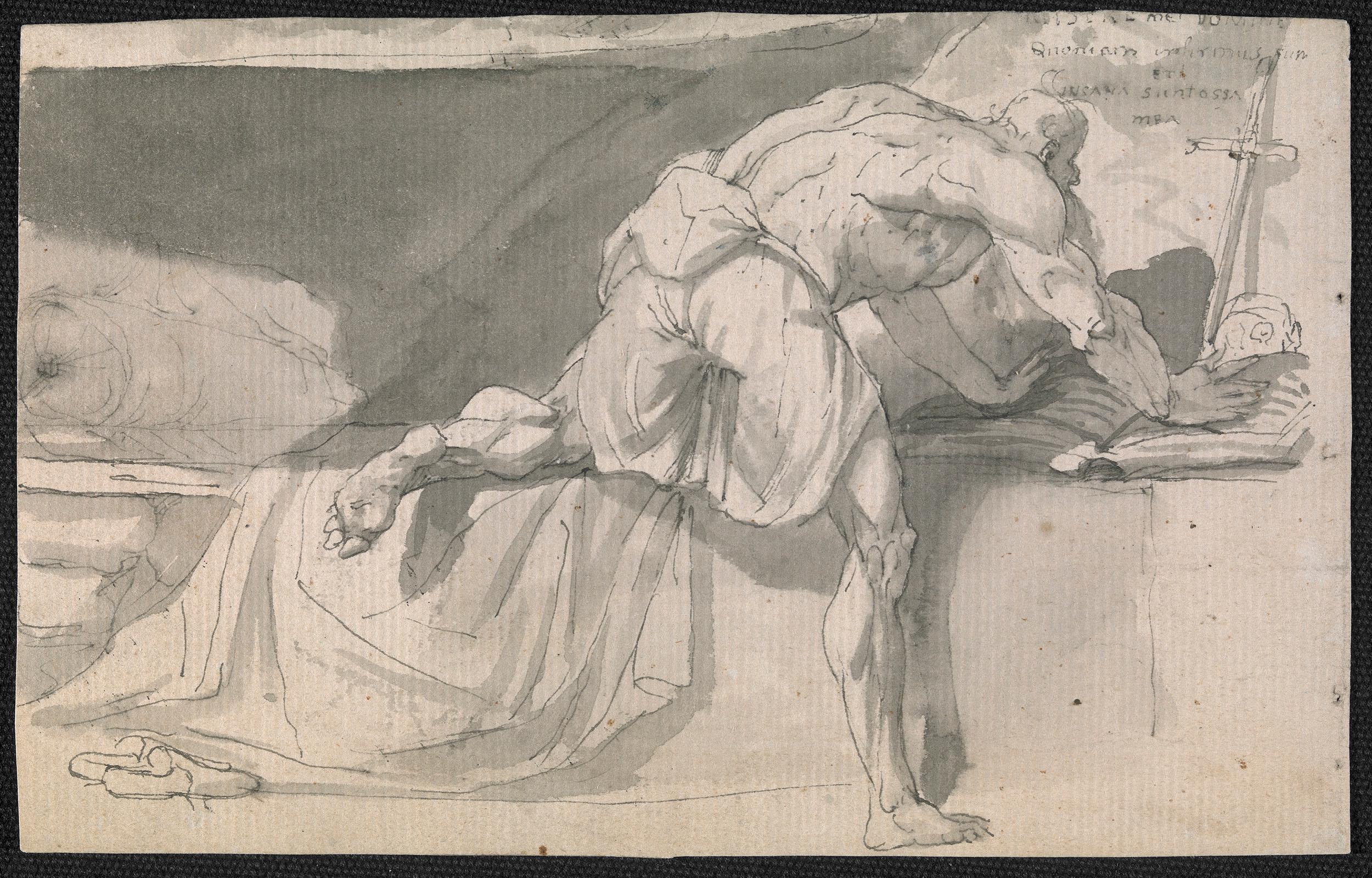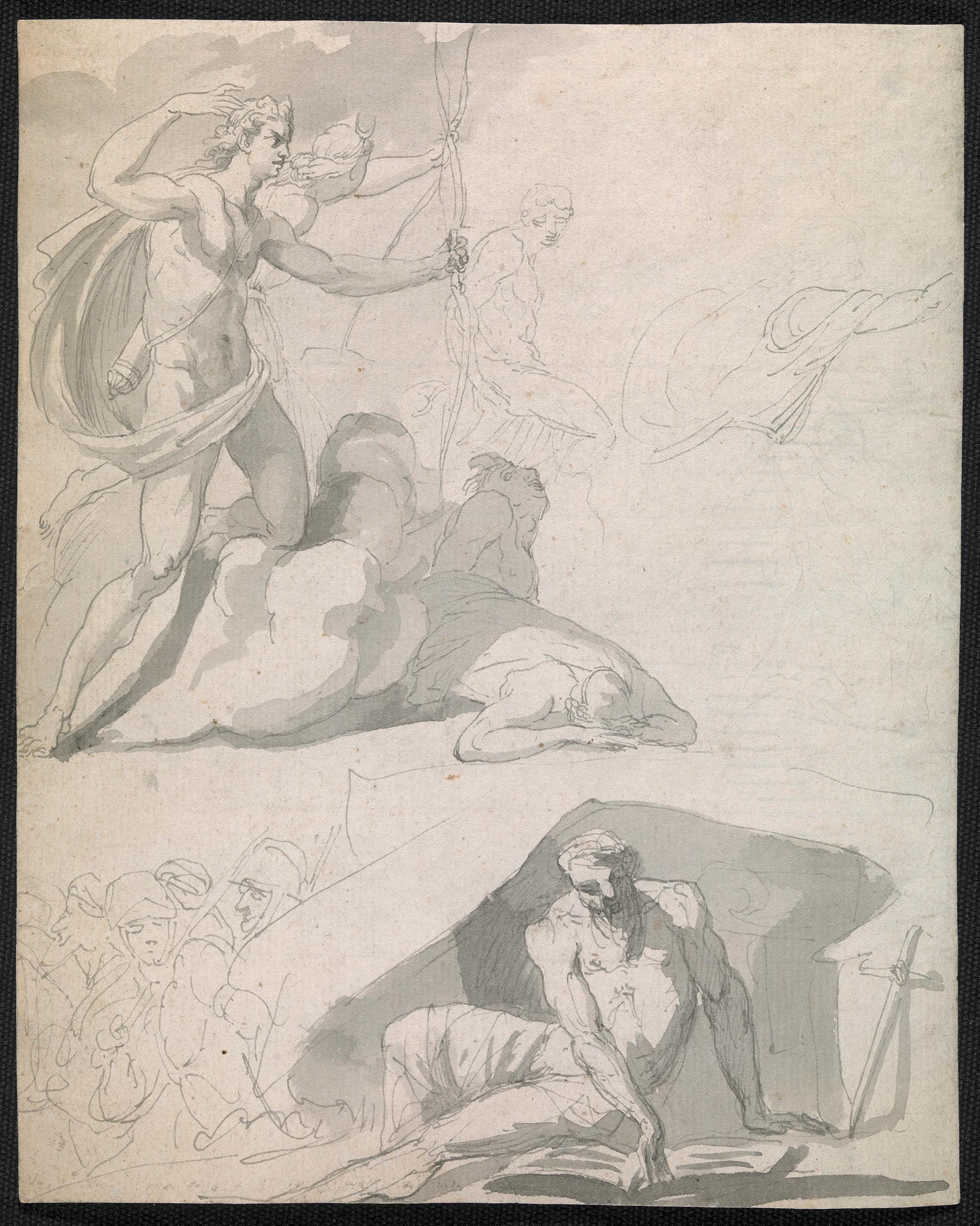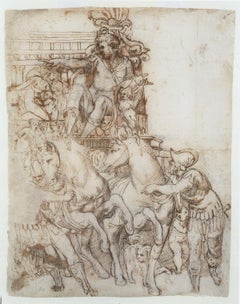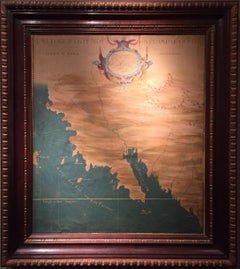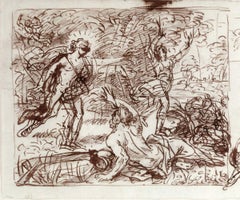
Apollo and Daphne
View Similar Items
Want more images or videos?
Request additional images or videos from the seller
1 of 2
Carlo MarattaApollo and Daphne1680
1680
About the Item
- Creator:Carlo Maratta (1625 - 1713)
- Creation Year:1680
- Dimensions:Height: 7.75 in (19.69 cm)Width: 9.25 in (23.5 cm)
- Medium:
- Movement & Style:
- Period:
- Condition:
- Gallery Location:Chicago, IL
- Reference Number:1stDibs: LU36535746602
About the Seller
5.0
Recognized Seller
These prestigious sellers are industry leaders and represent the highest echelon for item quality and design.
Established in 1955
1stDibs seller since 2016
12 sales on 1stDibs
Typical response time: 15 hours
Associations
International Fine Print Dealers Association
More From This SellerView All
- The Triumph of Constantine the GreatLocated in Chicago, ILInscribed on the verso: EE 27/10Category
16th Century Old Masters Drawings and Watercolor Paintings
MaterialsChalk, Ink, Pen
- Madonna and Child and Saint with Two AngelsLocated in Chicago, ILThis confidently executed drawing is a study related to Maratta’s painting La Vergine appare a S.Stanislao Kotska 1687 in the second chapel to the right, in the church of S. Andrea a...Category
17th Century Old Masters Drawings and Watercolor Paintings
MaterialsChalk
- The Giant Wheel (Carceri IX), (2nd State)By Giovanni Battista PiranesiLocated in Chicago, ILThis is a second state impression from three states.Category
Mid-18th Century Old Masters Interior Prints
MaterialsEngraving, Etching
- Venus and the Rose (2nd State)By Giorgio Mantovano GhisiLocated in Chicago, ILEngraving after Luca PenniCategory
16th Century Old Masters Prints and Multiples
MaterialsEngraving
- The Hunchbacked Fiddler (3rd State)By Adriaen van OstadeLocated in Chicago, ILThe Hunchbacked Fiddler (3rd State), 1654 Etching 266 x 113 mm.; 6 1/2 x 4 7/16 inches Watermark: Fleur-de-lys in a Crowned Shield References: Godefroy 44 III/VI Hollstein 44 III/VI Pelletier, Adrian van Ostade...Category
17th Century Old Masters Figurative Prints
MaterialsEtching
- View of the Tiber with Country LandscapeBy Jan Dirksz BothLocated in Chicago, ILEtching on paper with Schriftband watermark. Reference: Bartsch 7 III/IV (from VI). A very fine, early impression. Printed with the name of the artist, but before the addition...Category
15th Century and Earlier Old Masters Landscape Prints
MaterialsEtching
You May Also Like
- The Abduction of the Sabine Women , a Renaissance drawing by Biagio PupiniLocated in PARIS, FRThis vigorous drawing has long been attributed to Polidoro da Caravaggio: The Abduction of the Sabine Women is one of the scenes that Polidoro depicted between 1525 and 1527 on the façade of the Milesi Palazzo in Rome. However, the proximity to another drawing inspired by this same façade, kept at the Ecole des Beaux-Arts, and to other drawings inspired by Polidoro kept at the Musée du Louvre, leads us to propose an attribution to Biagio Pupini, a Bolognese artist whose life remains barely known, despite the abundant number of drawings attributed to him. 1. Biagio Pupini, a Bolognese artist in the light of the Roman Renaissance The early life of Biagio Pupini, an important figure of the first half of the Cinquecento in Bologna - Vasari mentions him several times - is still poorly known. Neither his date of birth (probably around 1490-1495) nor his training are known. He is said to have been a pupil of Francesco Francia (1450 - 1517) and his name appears for the first time in 1511 in a contract with the painter Bagnacavallo (c. 1484 - 1542) for the frescoes of a church in Faenza. He then collaborated with Girolamo da Carpi, at San Michele in Bosco and at the villa of Belriguardo. He must have gone to Rome for the first time with Bagnacavallo between 1511 and 1519. There he discovered the art of Raphael, with whom he might have worked, and that of Polidoro da Caravaggio. This first visit, and those that followed, were the occasion for an intense study of ancient and modern art, as illustrated by his abundant graphic production. Polidoro da Caravaggio had a particular influence on the technique adopted by Pupini. Executed on coloured paper, his drawings generally combine pen, brown ink and wash with abundant highlights of white gouache, as in the drawing presented here. 2. The Abduction of the Sabine Women Our drawing is an adaptation of a fresco painted between 1525 and 1527 by Polidoro da Caravaggio on the façade of the Milesi Palace in Rome. These painted façades were very famous from the moment they were painted and inspired many artists during their stay in Rome. These frescoes are now very deteriorated and difficult to see, as the palace is in a rather narrow street. The episode of the abduction of the Sabine women (which appears in the centre of the photo above) is a historical theme that goes back to the origins of Rome and is recounted both by Titus Livius (Ab Urbe condita I,13), by Ovid (Fasti III, 199-228) and by Plutarch (II, Romulus 14-19). After killing his twin brother Romus, Romulus populates the city of Rome by opening it up to refugees and brigands and finds himself with an excess of men. Because of their reputation, none of the inhabitants of the neighbouring cities want to give them their daughters in marriage. The Romans then decide to invite their Sabine neighbours to a great feast during which they slaughter the Sabines and kidnap their daughters. The engraving made by Giovanni Battista Gallestruzzi (1618 - 1677) around 1656-1658 gives us a good understanding of the Polidoro fresco, allowing us to see how Biagio Pupini reworked the scene to extract this dynamic group. With a remarkable economy of means, Biagio Pupini takes over the left-hand side of the fresco and depicts in a very dense space two main groups, each consisting of a Roman and a Sabine, completed by a group of three soldiers in the background (which seems to differ quite significantly from Polidoro's composition). The balance of the drawing is based on a very strongly structured composition. The drawing is organised around a median vertical axis, which runs along both the elbow of the kidnapped Sabine on the left and the foot of her captor, and the two main diagonals, reinforced by four secondary diagonals. This diamond-shaped structure creates an extremely dynamic space, in which centripetal movements (the legs of the Sabine on the right, the arm of the soldier on the back at the top right) and centrifugal movements (the arm of the kidnapper on the left and the legs of the Sabine he is carrying away, the arm of the Sabine on the right) oppose each other, giving the drawing the appearance of a whirlpool around a central point of support situated slightly to the left of the navel of the kidnapper on the right. 3. Polidoro da Caravaggio, and the decorations of Roman palaces Polidoro da Caravaggio was a paradoxical artist who entered Raphael's (1483 - 1520) workshop at a very young age, when he oversaw the Lodges in the Vatican. Most of his Roman work, which was the peak of his career, has disappeared, as he specialised in facade painting, and yet these paintings, which are eminently visible in urban spaces, have influenced generations of artists who copied them abundantly during their visits to Rome. Polidoro Caldara was born in Caravaggio around 1495-1500 (the birthplace of Michelangelo Merisi, known as Caravaggio, who was born there in 1571), some forty kilometres east of Milan. According to Vasari, he arrived as a mason on the Vatican's construction site and joined Raphael's workshop around 1517 (at the age of eighteen according to Vasari). This integration would have allowed Polidoro to work not only on the frescoes of the Lodges, but also on some of the frescoes of the Chambers, as well as on the flat of Cardinal Bibiena in the Vatican. After Raphael's death in 1520, Polidoro worked first with Perin del Vaga before joining forces with Maturino of Florence (1490 - 1528), whom he had also known in Raphael's workshop. Together they specialised in the painting of palace façades. They were to produce some forty façades decorated with grisaille paintings imitating antique bas-reliefs. The Sack of Rome in 1527, during which his friend Maturino was killed, led Polidoro to flee first to Naples (where he had already stayed in 1523), then to Messina. It was while he was preparing his return to the peninsula that he was murdered by one of his assistants, Tonno Calabrese, in 1543. In his Vite, Vasari celebrated Polidoro as the greatest façade decorator of his time, noting that "there is no flat, palace, garden or villa in Rome that does not contain a work by Polidoro". Polidoro's facade decorations, most of which have disappeared as they were displayed in the open air, constitute the most important lost chapter of Roman art of the Cinquecento. The few surviving drawings of the painter can, however, give an idea of the original appearance of his murals and show that he was an artist of remarkable and highly original genius. 4. The façade of the Milesi Palace Giovanni Antonio Milesi, who commissioned this palace, located not far from the Tiber, north of Piazza Navona, was a native of the Bergamo area, like Polidoro, with whom he maintained close friendly ties. Executed in the last years before the Sack of Rome, around 1526-1527, the decoration of Palazzo Milesi is considered Polidoro's greatest decorative success. An engraving by Ernesto Maccari made at the end of the nineteenth century allows us to understand the general balance of this façade, which was still well preserved at the time. The frescoes were not entirely monochrome, but alternated elements in chiaroscuro simulating marble bas-reliefs and those in ochre simulating bronze and gold vases...Category
16th Century Old Masters Figurative Drawings and Watercolors
MaterialsInk, Gouache, Pen
- The Flight into EgyptLocated in New York, NYInscribed: 3. una Madonna che va in Egitto, verso, and Madonna che va in Egitto, recto Provenance: Private Collection, UK, since 1999 This expressive and boldly executed drawing is the work of Luca...Category
16th Century Old Masters Figurative Drawings and Watercolors
MaterialsInk, Paper, Chalk, Pen
- The 1564 Medici Danti Map of CaliforniaBy Fra Egnazio DantiLocated in New York, NYFlorentine, Probably Seventeenth Century Titled L’ultime parti note nel Indie occidentali Dated on the edge of the cartouche: “M.D. LXIII. M.AG” [1564…the month of August] In the 1560s Cosimo I de’Medici, the powerful Duke of Florence, undertook a major renovation of the Palazzo Vecchio, the venerable palace that to this day dominates the city at the Piazza della Signoria. For the Sala della Guardaroba, literally the wardrobe room, but in fact the storeroom of the Duke’s most precious holdings, Cosimo conceived of a grand decorative project that was to reflect in one space the entire cosmos --both an indication of the Duke’s ambition and an allusion to his name. The plan, supervised by Giorgio Vasari, involved the construction of walnut cabinets to contain the Medici treasures, on the outside doors of which were to be placed large hand-painted maps specially commissioned to document and illustrate the current knowledge of the world. Portraits of famous men were to decorate the tops of the cabinets and two large globes –one representing the terrestrial world, the other celestial—were to descend from openings in the ceiling. The commission for the maps, inspired by Ptolemy’s Geographia, was given to the celebrated mathematician and cosmographer, Fra Egnazio Danti (Perugia 1536-1585 Alatri). Fifty-three maps were ultimately created. Thirty were conceived and executed by Danti between 1563 and 1575. The remaining twenty-three were completed by Stefano Bonsignori between 1576 and 1686. They remain in place in Florence in the room for which they were created. The present work is an exact-size painted, drawn and inscribed copy of Danti’s map of California...Category
17th Century Old Masters Drawings and Watercolor Paintings
MaterialsCanvas, Pen, Gouache, Watercolor, Ink, Paper
- The Martyrdom of Saint Bartholomew, a preparatory drawing by Alessandro CasolaniLocated in PARIS, FRThis powerful pen and brown ink wash drawing is a study for an altarpiece depicting The Martyrdom of Saint Bartholomew. Signed and dated 1604, it was painted at the end of his life b...Category
Early 1600s Old Masters Figurative Drawings and Watercolors
MaterialsInk, Pen
- A View of Capodimonte and A View of Posillipo in Naples; Two DrawingsLocated in New York, NYPROVENANCE Mortimer Brandt, until 1993 and thus by descent in the family to Private Collection, Baltimore until the present time We would like to thank Charles Beddington for ident...Category
Late 17th Century Old Masters Landscape Drawings and Watercolors
MaterialsPen, Ink, Laid Paper
- Study of a Franciscan Saint, probably San Diego de AlcaláLocated in New York, NYProvenance: Ivan E. Phillips, Montreal and New York, until 2023. The brothers Bartolomé Carducho and Vicente Carducho, both born and trained in Florence, settled in Spain where they made their careers. Vicente worked on numerous commissions for both the church and the Spanish court...Category
17th Century Old Masters Drawings and Watercolor Paintings
MaterialsPaper, Chalk, Ink, Pen
Recently Viewed
View AllMore Ways To Browse
The Muses
The Apollo
Old Pen
Apollo Art
Apollo Antique
Antique Pen And Ink Drawings
Apollo Painting
Antique Bruxelles
17th Ink Drawings
17th Century Ink Drawings
Master Apollo
Apollo Daphne
Apollo And Daphne
Carlo Maratta
20th Century Watercolour Portraits
Portrait Of A Woman Drawing
French Ink Watercolor
French Watercolor And Ink

